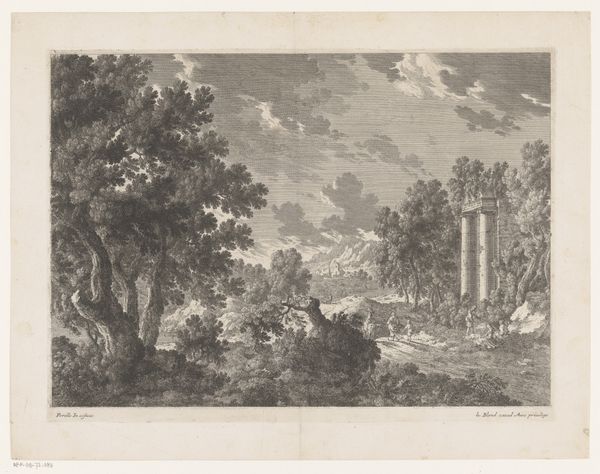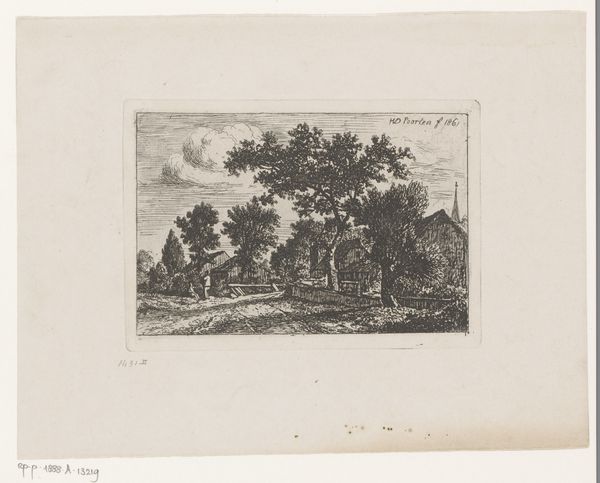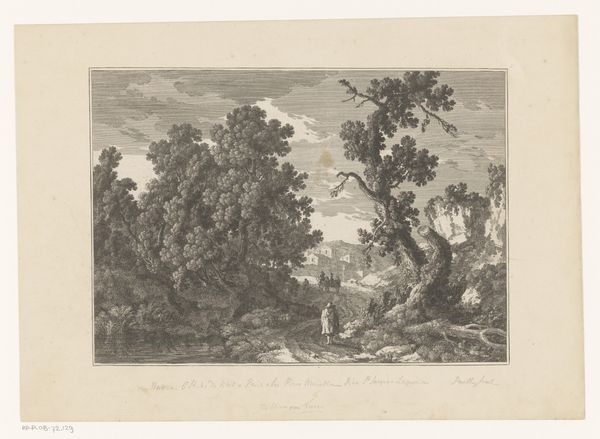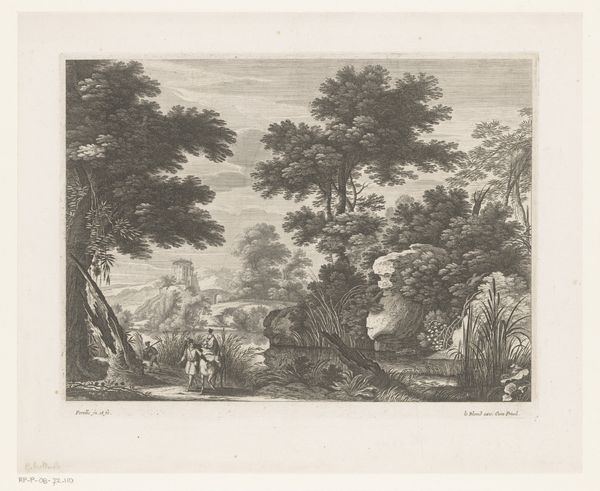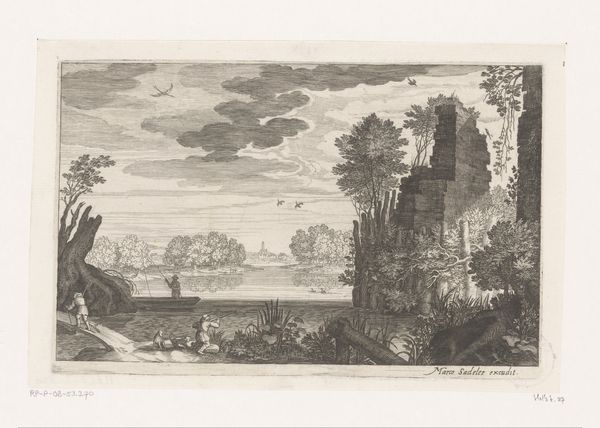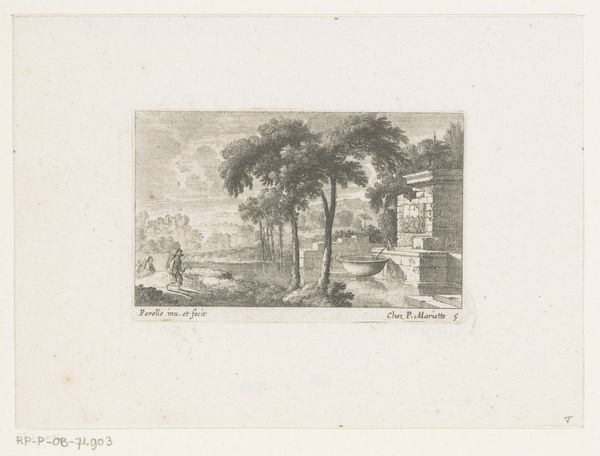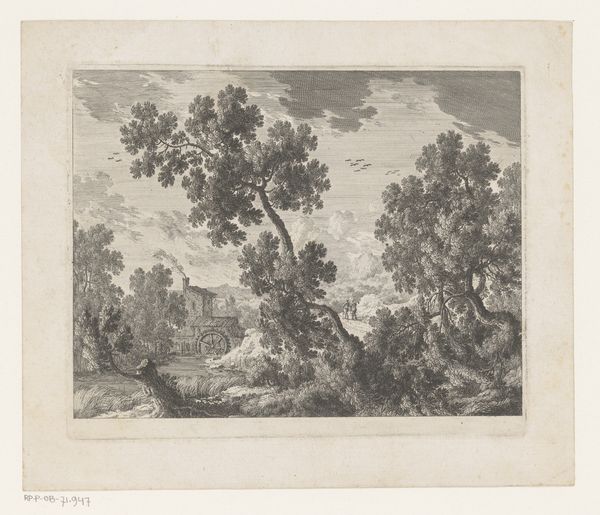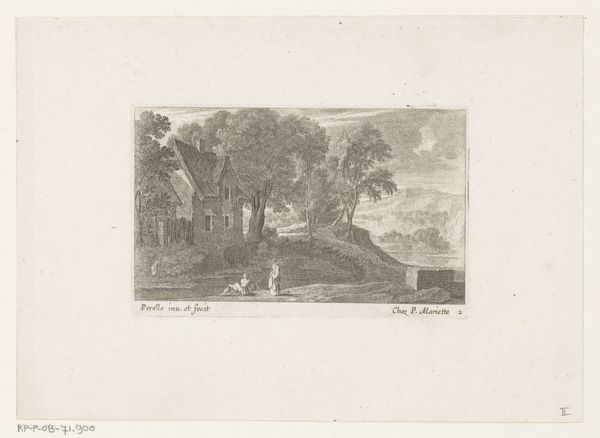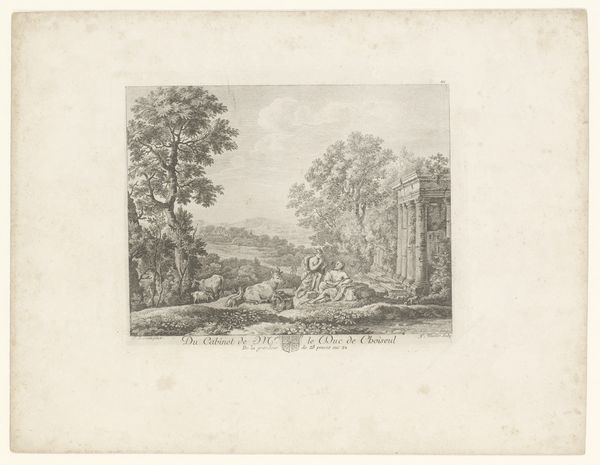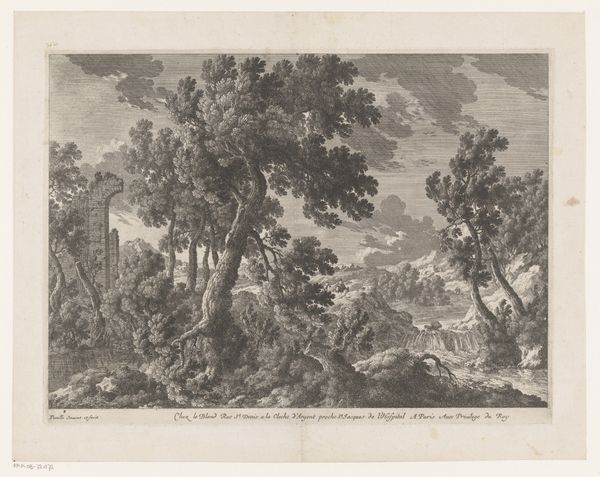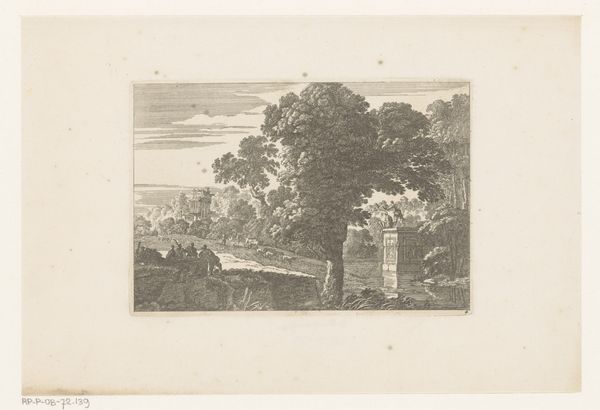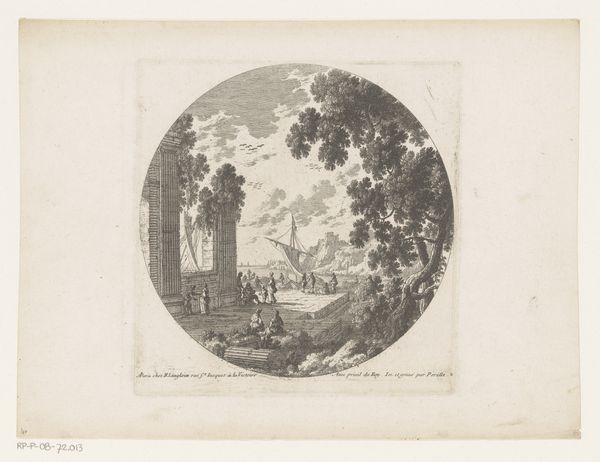
#
photo of handprinted image
#
light pencil work
#
pale palette
#
pale colours
#
ink paper printed
#
light coloured
#
white palette
#
repetition of white colour
#
remaining negative space
#
soft colour palette
Dimensions: height 130 mm, width 146 mm
Copyright: Rijks Museum: Open Domain
Editor: This is "Figures by a Ruin on a Riverbank," created between 1650 and 1695 by Adam Perelle. It's an ink print on paper and is currently held at the Rijksmuseum. I'm struck by how delicate it is, especially the light touch with the ink. What can you tell me about the process of creating this piece? Curator: Well, engravings like this were essentially mass-produced items. We need to think about the economic conditions surrounding printmaking in the 17th century. This wasn’t necessarily about 'high art'; it was a business. Consider the labor involved in the design and creation of the plates themselves, the type of paper used, and the printing process. How do those elements speak to its function as a commodity? Editor: So, it was intended for a broader audience and dissemination, instead of the wealthy commissioners that usually acquired art at that time. Do the materials available at that time influence its visual language? Curator: Absolutely. The availability and cost of copper plates, the specific inks, the paper—all would have played a significant role in the final image. Look closely. What do you notice about the use of line and texture? Think about how those effects are achieved through the physical act of engraving. The very process leaves its mark. Editor: I see. So, the limited tonal range, the emphasis on line...that’s as much a product of the printing technique as it is a deliberate artistic choice. It’s interesting to consider that something so widely produced could still possess such delicate detail. I appreciate seeing it in a new light, focused on its production and broader context. Curator: Exactly. Thinking about art through the lens of materials and processes can offer entirely different perspectives and force us to reconsider established ideas around value and artistry. I see it, too, with more enlightened eyes.
Comments
No comments
Be the first to comment and join the conversation on the ultimate creative platform.
